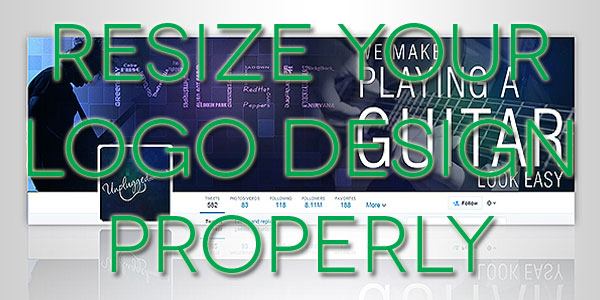 24 April 19
24 April 19
Resize Your Logo Design Properly
I'm a company logo designer and I've been working on this profession for years. Although I can't stop sharing with my clients that they should always keep carefully the proportions of these logo when they resize it, I nonetheless notice dozens who don't listen to my advice.
You should never adjust the width or your logo without modifying the height from it in the exact same proportions.
Do you know why?
Because if you resize your logo design without following a proportions, it'll look uneven and blurred.
This may not really sound like a problem but it provides big bad impression to all or any your clients. When they come to your website and visit a logo it doesn't look right they will believe that you didn't work with a good artist or which you don't care more than enough about your business.
I have seen hundreds of awesome logos that obtained extremely ugly since they have been resized in the wrong manner. Whenever a twitter logo designer is developing a logo he requires a significant amount of time to create a shape and size that will take full advantage of the company logo. How comes an individual resizes it differently and throw all of that function down the drill?
Here's my suggestions, if you have to resize a company logo, do it the proper way, retain its proportions. In case you don't know how to do it, easily contact your custom and tell him you must put your logo right into a certain space, he will surely be able to help you out and offer the logo in the precise size you will need.
Catherine is an experienced logo artist who has been working in the for over a decade, she has made literally a large number of logos and is well known for her ability to get the client's vision and transform it into art: cheap logo design.
THE WORTHINESS in Hiring an Experienced Graphic Designer
A graphic designer works out to provide businesses with any aesthetic communications they may require.
This includes logo design, layout design and style for printed items such as signage, stationery, and marketing materials (brochures, flyers etc) for instance.
In today's Web age a graphic designer is often also in a position to design electronic communications such as for example e-newsletters, websites and much more.
Not all graphic designers cover all provider areas mentioned, nevertheless a skilled and experienced graphic designer is worth their excess weight in gold.
Hiring a graphic designer who includes a couple of years of experience working with business owners to create memorable visual marketing communications has some specific advantages over dealing with newer designers.
These Include to name just a couple
** Acceleration & Performance - A skilled designer is frequently used to focusing on many different assignments at once; controlling their time properly, and delivering your project to agreed timescales.
If you're hiring your creator by using an hourly rate basis rather than getting quoted 'for the work' a skilled custom made quoting you a higher rate per hour might actually costs you for fewer at the end of the task if they are quicker than a custom quoting less per hour.
It's always excellent to get an estimate from your own designer as to just how long they expect the duty to take, or even better try to get them to quote 'for the job' regardless of how long it takes them. Don't forget to ask if revisions happen to be contained in the 'for the employment' price.
** Publishing Pitfalls - There are many print layout style pitfalls a designer can fall into if they have no idea their trade inside out. These include;
Printing Bleed: Any doc laid out for print must have a few mm's of bleed overlapping the edge of the report size (i.e. the makers document must be bigger than the actual printed merchandise) - each twitter designer firm includes a different requirement for how many mm's that should be. An experienced visual designer will understand the necessity to learn before they start off designing, and ideally be proactive plenty of to get touching the print company themselves to find out.
Not offering proper dpi for pictures: Everyone knows that if you are providing a printing firm an image style that is comprised of pixels such as TIFF or JPEG, the image should be at the least 300 dpi (dots per in .).... or perform they all find out this? Is your designer aware of this?
Likewise if you are offering the print out organization a vector image such as for example EPS, or AI.... that pixels are usually irrelevant because scalable vector images output by qualified design software, are not made up of pixels.


Comments